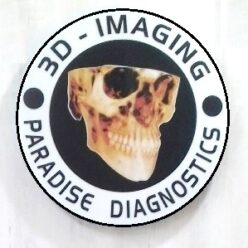An OPG X-ray, or Orthopantomogram, is a type of panoramic dental X-ray that provides a wide and comprehensive view of the upper and lower jaws, teeth, and surrounding structures. It is a two-dimensional radiographic examination that captures a single image of the entire oral and maxillofacial region. OPG X-rays are commonly used in dental and maxillofacial imaging for diagnostic and treatment planning purposes.
Key features of an OPG X-ray include:
Panoramic View:
The OPG X-ray captures a panoramic view of the entire mouth, including the teeth, jaws, temporomandibular joints (TMJ), and surrounding tissues.
Dental and Bone Structure Visualization:
It provides a clear view of the teeth, their positions, and the supporting bone structure. This is valuable for assessing dental health, detecting abnormalities, and planning various dental procedures.
Orthodontic Assessment:
OPG X-rays are commonly used in orthodontics to assess the alignment of teeth and the development of the jaw. They aid orthodontists in treatment planning for braces and other orthodontic interventions.
Impacted Teeth Detection:
The OPG is useful for detecting impacted teeth, such as wisdom teeth, which may not have erupted or may be positioned in an abnormal manner.
TMJ Evaluation:
It allows for the evaluation of the temporomandibular joints (TMJ), which are critical for jaw movement. TMJ disorders and abnormalities can be identified through OPG imaging.
Sinus Examination:
OPG X-rays can capture the sinus cavities, helping to assess the sinus anatomy and detect potential issues such as sinusitis or other sinus-related conditions.
Fracture Detection:
The OPG is capable of revealing fractures or other abnormalities in the jaw and facial bones.
Dental Implant Planning:
Dentists use OPG X-rays for planning dental implant placement by assessing the available bone structure in the jaw.
Quick and Non-Invasive:
OPG imaging is a relatively quick and non-invasive procedure, making it well-tolerated by patients.
It’s important to note that while OPG X-rays provide a broad overview of the oral and maxillofacial region, they may not provide the same level of detail as three-dimensional imaging techniques like Cone Beam Computed Tomography (CBCT). The choice between OPG and CBCT depends on the specific diagnostic needs of the patient and the information required by the healthcare provider.
